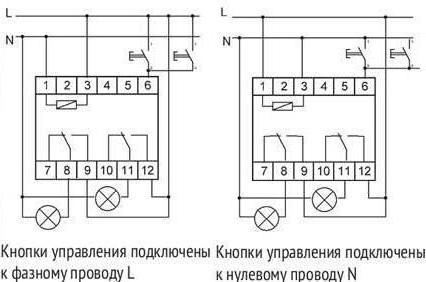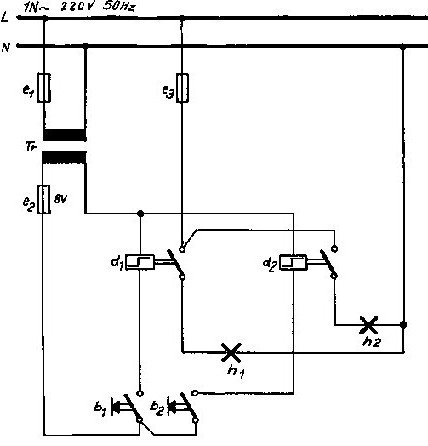There are quite a few types of relays, but the problem with conventional ones is that they need to be constantly supplied with energy, or voltage. And if there is no space or in order to save money you cannot afford it? Can this be fixed somehow? Yes, and an impulse relay can help in creating circuits in such cases. What is it, how does it work? What features of the scheme should be taken into account by those who decide to make it with their own hands? A conventional relay is a board that has a built-in system for receiving pulse information signals.
Operating principle: how does an impulse relay work?
Such a device has a strong advantage - there is no need to constantly apply voltage for successful operation. Energy in this device is used very efficiently. Therefore, the inclusion trimmer can be found in many electronic devices. To better understand the principle of operation, it is necessary to consider it in conjunction with the schematic component. Therefore, they will be described together.
Impulse relay circuit
 It is easy to make it with your own hands. The device itself is represented by a sensor unit and an electric coil. It can be powered by direct or alternating current. But when it exceeds a certain threshold value, the coil activates a mechanism that changes the state of the contacts. So, if they were closed, then they open, and vice versa. When power is applied to the coil, it generates a magnetic field, which, in fact, affects the switch mechanism. It essentially operates by passing state from one circuit to another.
It is easy to make it with your own hands. The device itself is represented by a sensor unit and an electric coil. It can be powered by direct or alternating current. But when it exceeds a certain threshold value, the coil activates a mechanism that changes the state of the contacts. So, if they were closed, then they open, and vice versa. When power is applied to the coil, it generates a magnetic field, which, in fact, affects the switch mechanism. It essentially operates by passing state from one circuit to another.
The impulse relay is based on two schemes. The first is responsible for control, the second is the load circuit. Considering that all impulses are created exclusively due to electromagnetic fields, an important advantage should be noted - this device is silent. The elements of the second circuit also have a part that is responsible for the relay memory. In general, if you look at existing technologies, you can see that any low-voltage modular device has a mechanism that is responsible for storing data. Therefore, when disconnected and reconnected, the impulse relay “remembers” the last settings, information about the connection, network status and the operation of the device itself. Considering the circuit, technically educated people may ask the question: why use such a device, if you can use a regular pass-through switch to monitor the illumination? But the fact is that even the simplest version of the relay offers a significant range of actions. Thanks to him, you can monitor the illumination from three or more places. And it doesn't take much effort to connect. Let's look at what types of device data exist.
relay type
Several popular industrial-type samples will be considered:
- Pulse electromagnetic relay. Bistable type 411. Can transmit up to 12V.
- Bistable type 413. The device has a special circuit, due to which the light is turned off after a certain period of time.
- Devices of the 412 and 414 series. Combined the characteristics of the two previous types.
But please note that the samples provided, although reliable, do not represent the entire range of devices. There are many other types of relays that are used in certain areas. Thus, the devices indicated here are used when working with lighting or devices that operate on a similar principle.
How to do it yourself?
 And now to the most important thing - how to assemble it with your own hands? Take as a basis a solid state polarized relay that has a built-in timer. If it is bipolar, then two switches are required for operation, and for a single-pole one, a change in polarity is required. The schemes proposed in the article will allow you to assemble a device with the following characteristics:
And now to the most important thing - how to assemble it with your own hands? Take as a basis a solid state polarized relay that has a built-in timer. If it is bipolar, then two switches are required for operation, and for a single-pole one, a change in polarity is required. The schemes proposed in the article will allow you to assemble a device with the following characteristics:
- 12V and 0.03mA (ideal for solar panel use).
- The resulting output current will be 7 A.
- There are four switches available.
When the device is in latching mode, every time a signal is received, an instantaneous pulse is generated. If it is necessary to set a timer, one usually chooses one operating in two time ranges: up to one second, and 1-100. But if there is no desire to complicate, the impulse relay circuit presented here may well satisfy you. In industrial designs, there is already a tuning system; in home-made devices, you will have to create it from scratch.
Conclusion
 As you can see, the impulse relay circuit is not so complicated. It is quite possible to do it with your own hands, only you need to be careful. After all, although the tension is not great, the injury in case of violation of safety precautions will be very painful. And how nice it will be that a do-it-yourself impulse relay will add a certain comfort and save energy.
As you can see, the impulse relay circuit is not so complicated. It is quite possible to do it with your own hands, only you need to be careful. After all, although the tension is not great, the injury in case of violation of safety precautions will be very painful. And how nice it will be that a do-it-yourself impulse relay will add a certain comfort and save energy.

